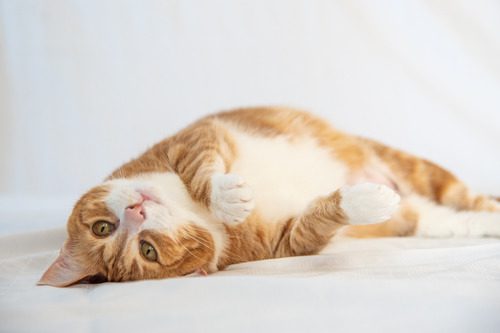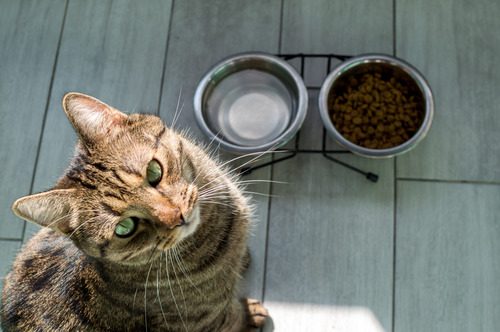My Cat’s Teeth are Falling Out: What Do I Do?
It can be startling to find a tooth on the floor or notice your cat struggling to eat their food. When a cat’s teeth are falling out, it’s usually a sign that something deeper is going on. Dental health is often overlooked in cats because they tend to hide discomfort well—but tooth loss is never normal in adult cats. If you’ve noticed this happening in your pet, the best thing to do is schedule a veterinary appointment as soon as possible. At Companion Animal Hospital of Wakefield in Raleigh, we’re here to identify the problem, explain what it means for your cat, and recommend the right next steps. Please call us at (919) 488-5300 if your cat’s teeth are falling out.

What It Means When a Cat’s Teeth Are Falling Out
When adult cats start losing teeth, it’s a sign that their oral health needs immediate attention. While kittens naturally lose their baby teeth between 3 to 6 months of age, tooth loss in adults is usually caused by disease, trauma, or other medical concerns.
Natural vs. Abnormal Tooth Loss in Cats
The most common cause is periodontal disease, which develops when plaque and tartar build up on the teeth and under the gum line. Over time, this can lead to inflammation, gum recession, and the weakening of the structures that support the teeth. Without treatment, teeth may loosen and fall out. Another common cause is feline resorptive lesions—painful defects that damage the tooth structure and lead to eventual loss.
Additional Causes of Tooth Loss
Tooth loss may also be associated with trauma, oral tumors, or untreated infections. No matter the cause, your veterinarian should evaluate your cat promptly. A physical exam and dental X-rays help determine the reason for the tooth loss and whether other teeth may be at risk.
Signs to Watch for if Your Cat’s Teeth Are Falling Out
Many cats show subtle signs when they’re experiencing oral discomfort. If your cat’s teeth are falling out, you may notice behavioral changes or symptoms that point to a larger issue. In addition to visible tooth loss, be aware of:
- Bad breath
- Drooling
- Pawing at the mouth
- Bleeding from the gums or mouth
- Difficulty eating or chewing
- Preference for soft food or refusal to eat
- Swelling around the jaw or face
Cats are naturally inclined to hide signs of pain. That’s why it’s important to observe even small changes in eating habits or daily behavior. A once-playful cat who’s become withdrawn may be dealing with chronic discomfort caused by dental issues.
Why You Shouldn’t Wait to Address Tooth Loss
Waiting to address dental problems can lead to worsening infections and significant pain for your cat. When a cat’s teeth are falling out, it’s a warning that other areas of the mouth could be compromised. Bacteria from infected gums can also enter the bloodstream and affect other organs, including the heart and kidneys.
The Risks of Delaying Dental Care
Regular veterinary dental care can prevent many of these complications. If your cat is already losing teeth, a full oral examination and dental cleaning under anesthesia may be necessary to identify damaged teeth and remove tartar buildup. Treating the problem early helps protect your cat’s remaining teeth and improves their quality of life.
How Our Team Supports Your Cat’s Dental Health
The team at Companion Animal Hospital of Wakefield is experienced in identifying and managing dental concerns in cats. We offer advanced diagnostic tools and safe anesthesia protocols to support your cat through every step of their dental care.
Understanding Feline Dental Disease
Dental disease affects the majority of adult cats, especially those over the age of three. When a cat’s teeth are falling out, it’s often because of advanced periodontal disease or other degenerative conditions.
Periodontal Disease
This is the most common reason for adult tooth loss. It begins when plaque forms on the teeth and hardens into tartar. As bacteria accumulate, the gums become inflamed—a condition known as gingivitis. Left untreated, the infection spreads deeper into the tissues and bone, ultimately leading to loose or missing teeth.
Tooth Resorption
Feline odontoclastic resorptive lesions (FORLs) affect over 50% of adult cats. In this condition, the tooth structure begins to erode from the inside out. Affected teeth may look normal on the surface, but underneath, they’re breaking down. This condition is painful and typically results in tooth loss unless treated with extractions.
Trauma and Injury
Physical trauma from falls, accidents, or chewing hard objects can also cause tooth loss. In some cases, trauma may crack the tooth or damage the root, making extraction necessary. Your vet can evaluate whether an injured tooth can be saved or if removal is the most comfortable option.
The Role of Routine Dental Exams
Preventing tooth loss in cats starts with regular veterinary care. If your cat’s teeth are falling out, it’s likely that dental disease has been progressing for a while. Routine dental exams can catch early signs of disease before it becomes severe.
What to Expect During a Dental Checkup
During a dental checkup, your vet will examine your cat’s teeth and gums, look for signs of tartar buildup, and recommend dental cleanings as needed. These cleanings, done under anesthesia, allow for a thorough evaluation of the mouth, removal of plaque and tartar, and identification of any problem areas.
Dental Extractions and Recovery
If your cat needs extractions, your veterinary team will discuss the reasons and ensure your cat is comfortable before, during, and after the procedure. Cats adapt well to missing teeth—especially when painful, diseased teeth are removed. Most experience noticeable improvement in comfort and behavior after recovery.
How to Support Your Cat’s Oral Health Moving Forward
If your cat’s teeth are falling out, ongoing care is key to protecting the remaining teeth and preventing future issues. While home dental care can’t replace professional cleanings, it plays an important role in supporting your cat’s oral health between visits. There are several ways to help maintain your cat’s dental health:
- Use vet-approved dental treats and chews that help reduce plaque
- Consider water additives that support a healthy mouth
- Ask your vet about brushing your cat’s teeth—some cats tolerate it well when introduced gradually
- Monitor your cat’s mouth regularly for signs of redness, swelling, or odor
Tooth loss in cats is never normal and often points to an underlying dental or medical condition. If your cat’s teeth are falling out, scheduling a veterinary appointment is the best thing you can do. At Companion Animal Hospital of Wakefield in Raleigh, we’ll perform a thorough oral exam, take dental X-rays if needed, and talk through your options with you. Addressing the issue early can improve your cat’s comfort, protect their long-term health, and help you avoid more serious complications. Please call us at (919) 488-5300 to get your cat the care they need.
Recent Posts

Parasites in Dog’s Stool: Signs and Treatments

Why Is my Cat Not Drinking Water?

Common Causes of Eye Trauma in Dogs
About Us
At Companion Animal Hospital of Wakefield, our veterinarians in Raleigh, NC, provide better care for your pets. As members of your family, cats and dogs deserve the highest level of medicine with the most compassion. That’s why we put a strong emphasis on personalized care for your pet and client education for you. We believe that when we take the time to help you thoroughly understand your pet’s health, we’re able to make the best decisions for their care together.


